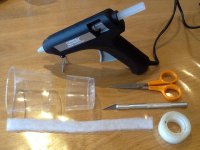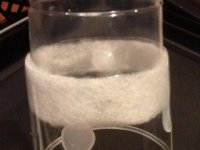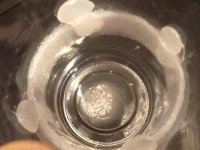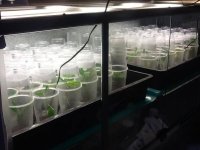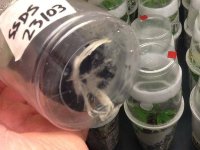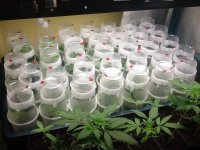Beuhologue
Member
Hi 
I thought about a solution to quarantine more effectively not yet rooted cuts received, either by mail or hand to hand, to prevent secondary infections, and confine the insects/diseases/pests carried by each cut, especially for those who receiving cuts of several sources that ultimately end up in the same space.
Advantages:
_Possibilities to observe cuts, to move the clones from quarantine to a distant place of treatment without contaminating healthy plants and those in quarantine;
_The certified healthy clones can move faster towards to the mother plants place;
_Less pesticide;
_Treatements are faster and more efficient;
_Once a clone of a variety are rooted are bug or problem free, the others may be placed in the freezer and thrown away or kept until eradication/until the death of cuts of by reducing to a minimum the risk of collective contamination;
_Cheap.
Equipment:
_Plastic clear glasses/cups ;
_1cm thick Dacron (white felted material, material socks surrounding carbon filters);
_Hot glue pistol;
_Transparent tape;
_Sharp cissors/and/or scalpel.
How to do?
_Cut regularly the bottom of a plastic cup;
_Cut Dacron strips one centimeter and a half wide;
_Stick a Dacron band on the upper edge of the lower part of the cup, not need more of 5 or 6 glue lines perpendicular to the top edge to stick it;
_Once the glue cooled, passing the bottom of the cup in the upper part of the cup, and lower the bottom to adjust the 2 parts keeping the Dacron strip horizontal well and regular, adjustment overwrites Dacron which 1cm passes to 3mm;
_Put 4 large glue dots overlapping the two inner sides of the cup to fix these two parts together;
_Opportunities to multiply the vents/barriers to insects
++!
Envoyé de mon iPad
I thought about a solution to quarantine more effectively not yet rooted cuts received, either by mail or hand to hand, to prevent secondary infections, and confine the insects/diseases/pests carried by each cut, especially for those who receiving cuts of several sources that ultimately end up in the same space.
Advantages:
_Possibilities to observe cuts, to move the clones from quarantine to a distant place of treatment without contaminating healthy plants and those in quarantine;
_The certified healthy clones can move faster towards to the mother plants place;
_Less pesticide;
_Treatements are faster and more efficient;
_Once a clone of a variety are rooted are bug or problem free, the others may be placed in the freezer and thrown away or kept until eradication/until the death of cuts of by reducing to a minimum the risk of collective contamination;
_Cheap.
Equipment:
_Plastic clear glasses/cups ;
_1cm thick Dacron (white felted material, material socks surrounding carbon filters);
_Hot glue pistol;
_Transparent tape;
_Sharp cissors/and/or scalpel.
How to do?
_Cut regularly the bottom of a plastic cup;
_Cut Dacron strips one centimeter and a half wide;
_Stick a Dacron band on the upper edge of the lower part of the cup, not need more of 5 or 6 glue lines perpendicular to the top edge to stick it;
_Once the glue cooled, passing the bottom of the cup in the upper part of the cup, and lower the bottom to adjust the 2 parts keeping the Dacron strip horizontal well and regular, adjustment overwrites Dacron which 1cm passes to 3mm;
_Put 4 large glue dots overlapping the two inner sides of the cup to fix these two parts together;
_Opportunities to multiply the vents/barriers to insects
++!
Envoyé de mon iPad


